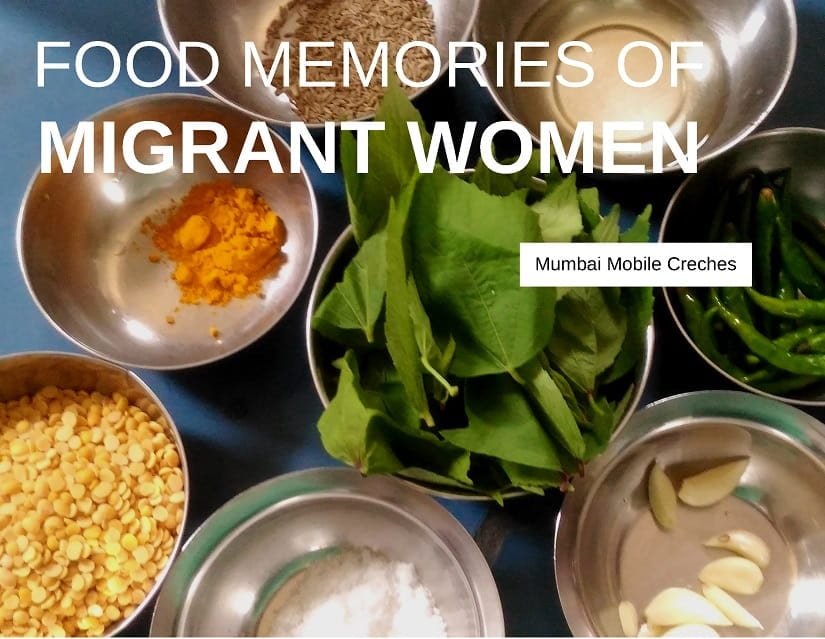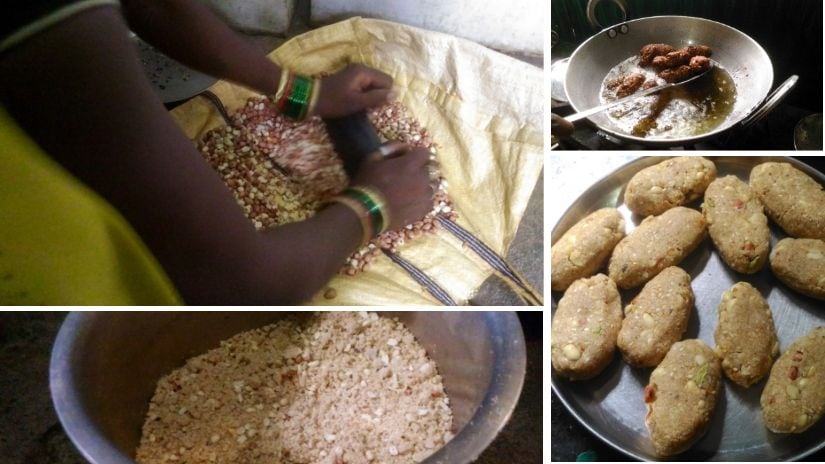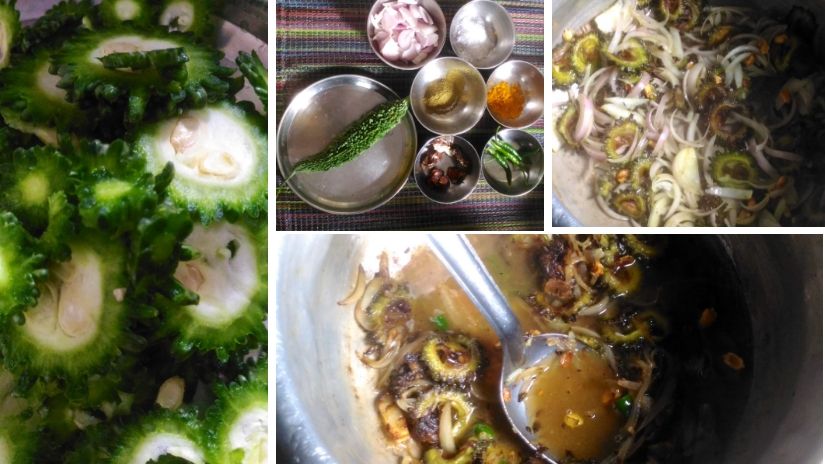As cities and metropolises grow, the changing skyline and seafront seem to uphold the more conspicuous indices of development, largely invisibilising the hands that built them — the migrant population of construction workers. Hailing from the interiors of the country, these men and women come to cities in search of better lives and secure futures. In order to keep up with mounting expenses and pressures, both genders participate equally in the workforce. Lending a hand in keeping such families together for nearly four decades now is Mumbai Mobile Creches (MMC), a non-profit organisation that looks after the children of labourers while they are out making ends meet. Established in 1972, MMC has been actively involved in the upliftment of such youngsters, with their latest venture encouraging children of migrant labourers to stay attached to their culinary heritage. [caption id=“attachment_6756491” align=“alignnone” width=“825”]  Cover page of Mumbai Mobile Creches latest e-recipe book.[/caption] The organisation has launched its first e-cookbook that lists traditional recipes of dishes from various parts of India. As much as it is a collection of regional culinary delights, it also captures the food memories of the migrant population in the city. Vrishali Pispati, director of MMC, speaks to Firstpost about the e-book and what went into the making of such a unique project. Excerpts: How did you conceptualise the idea of creating a cookbook/compilation of recipes of migrant women? What was the objective behind this project? Across India, lakhs of poor people particularly from the rain-dependent, drought-prone, disaster-struck areas migrate in search of livelihood. The construction industry is the single largest employer of migrant labourers in urban cities. India’s construction industry depends upon migrant workers who have moved from rural to urban areas, alone or with their families, each looking for better opportunities and a more sustainable livelihood. The wives who accompany them are likely to work as well, at the construction site or elsewhere, leaving their children to fend for themselves during the day. With migration, many of these women leave behind the secrets of their regional cuisine, carrying only the memories associated with their food with them. Hidden behind the tin sheets of the sites, the construction workers contribute to the economic growth of the city but their food and culture is rarely seen, heard or experienced. MMC has been running day-care centres for children of migrant construction workers for over four decades. We run a comprehensive programme covering health, nutrition and education. Children at our day-care centres hail from over 15 different states in India, reflecting the regional diversity of the migrant construction workers’ community. We wished to capture this cultural multiplicity, and the migrant perspective, through documentation of several regional recipes from across India. Through a series of personal recipes, narrated poignantly by the migrant women themselves, we decided to highlight the fascinating expanse of culinary traditions within India, and the importance of these traditions in preserving and celebrating each migrant family’s cultural identity. What kind of research did you and the team do for the book? We did both desk and ground research for the recipe compilation. We studied the regions represented on our sites. We developed a better understanding of the local produce, climate, festivals, culinary styles, etc. of various regions. Most importantly, we spoke to the women about the stories behind their recipes and the food of their region at length, to gain insight into what the recipes meant to each of them. [caption id=“attachment_6756511” align=“alignnone” width=“825”]  Huggi, a traditional sweet dish from Karnataka that is prepared using whole wheat grains, jaggery and coconut.[/caption] How did you select the recipes that made it to the book? We encouraged women living on the sites where we run day-care centres, to bring in as many recipes as they could. We tried to bring in as much regional variation as possible and tried to incorporate both sweet and savoury recipes. Duplicate recipes were weeded out. Our staff and the women then worked to identify the best suitable local ingredients for the recipe. Since the women didn’t have exact measurements for the ingredients in their recipes, our staff along with the women prepared the food items to work out the quantities of various ingredients to be used in the recipes and that’s how the recipes were finalised. How does migration affect the lifestyle and culinary styles of people, especially rural to urban migration? Migration has a huge impact on the culinary styles of people across the world. In India, inter-state migration has a greater impact on culinary styles than intra-state migration. The migrants eat according to the seasons when they are in their village; however, in urban cities, the price of the raw material is the biggest determining factor in their purchase of ingredients. In cities like Mumbai, vegetables are expensive, and this high cost has a huge impact on their dietary lifestyle. There is also the issue of accessibility of raw material; since many large construction sites come up in areas where infrastructure is not fully developed, ingredients required for the recipes are not easily available. Husband and wife both work long hours with very few breaks leaving them with very little time to cook meals. Also, since the migrants live in makeshift shanties and move very frequently, they carry few belongings - just very basic kitchen equipment. Both these factors have an impact on their method and style of cooking. Have any of the recipes changed majorly, due to variations in the availability of ingredients, inflation, and cultural changes? It has not been possible to recreate the recipes exactly as they are made in their homes. For example, India has so many local varieties of rice; each variety has its own unique colour, taste, fragrance all forming an integral part of the final preparation and making it virtually impossible to recreate the dish with its original taste in Mumbai. Migrant communities on construction sites move frequently, sometimes they stay as little as a week on a site, they, therefore, do not carry many belongings. The wooden and stone kitchen equipment available in their villages is not available to them here, thus rendering a different taste and texture to the dish when it is prepared in Mumbai. [caption id=“attachment_6756541” align=“alignnone” width=“825”]  Khurmi is a sweet dish prepared in Chhattisgarh and is savoured by the women during Teej. They eat khurmi to break their fasts.[/caption] Are these food items part of their everyday meals or do they cook these dishes only on special occasions? Some of the items like ambadi bhaji and jowar bhakri are made for everyday meals, while others like khurmi are made on special occasions. Preparations like edasa that stay well for a long time are often taken along on the long train journeys from their villages across various states to Mumbai. Having said that, most mothers try to make the dishes when their family members ask for it – special occasion or not! Apart from memories of their native places, do these food items signify any other aspect of their culture and history? People living in rural areas eat according to the produce available during the seasons. To these women, the recipes signify the changing seasons, connect them to their village, remind them of the families members left behind, harvests from their farmland and their regional festivals. Despite financial hardships, the women try their best to cook these recipes as often as they can. Though they may be hundreds of miles away from their villages, these recipes offer a way to stay connected to their homes and families. How have these women responded to the idea of the book? What was their reaction once the book got published? Initially, the women were hesitant and didn’t think anyone would be interested in recipes from their region. And now they are excited about the opportunity to share the recipes of their native regions with the people living in urban areas. [caption id=“attachment_6756551” align=“alignnone” width=“825”]  Uthu is a dish from Jharkhand which is made using bitter gourds and tamarind pulp.[/caption] Do you have more such projects in your pipeline? It would be wonderful to do something similar for art and music among the various migrant communities. Mumbai Mobile Creches’ Food Memories of Migrant Women is available as a compilation of recipes only on their website, not in print. The menu for Godrej Culture Lab’s upcoming event on 8 June, titled Migration Museum, is inspired by the recipes listed in the book.
With their e-book Food Memories of Migrant Women, Mumbai Mobile Creches (MMC) aims to capture the cultural multiplicity and the migrant perspective, through the documentation of several regional recipes from across India.
Advertisement
End of Article


)
)
)
)
)
)
)
)
)



